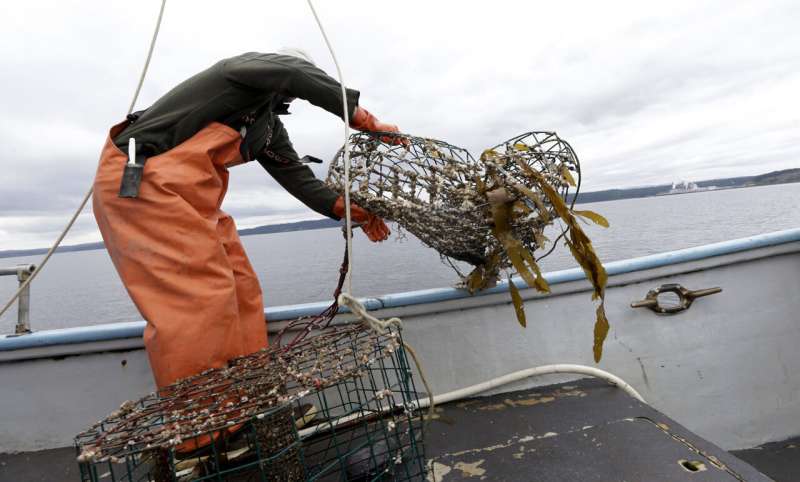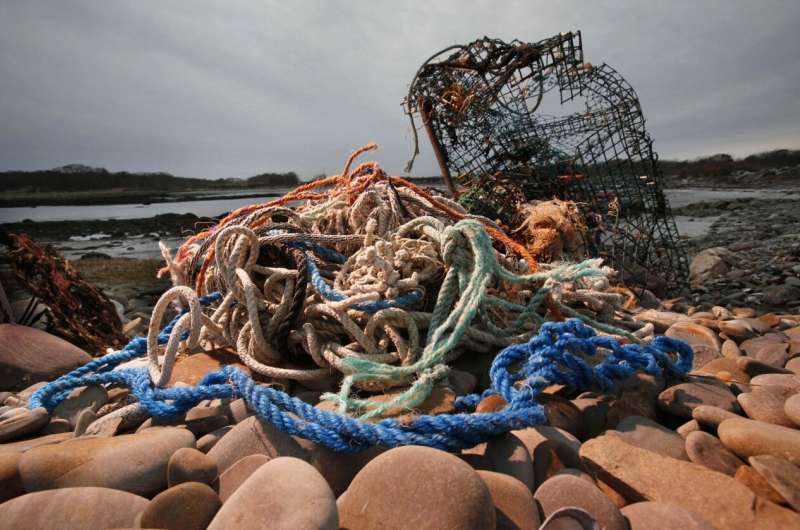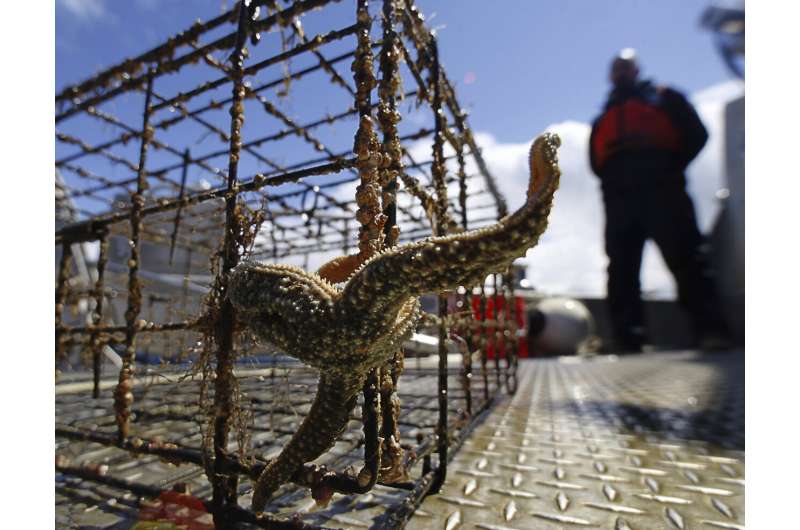This article has been reviewed according to Science X's editorial process and policies. Editors have highlighted the following attributes while ensuring the content's credibility:
fact-checked
reputable news agency
proofread
New federal program targets abandoned crab, lobster traps

The U.S. government is launching a new program to combat the scourge of abandoned crab and lobster traps, which can dilute harvests and kill other fish in coastal waters from Maine to Alaska.
The National Oceanic and Atmospheric Administration has chosen William & Mary's Virginia Institute of Marine Science to anchor the program. The university announced Friday that NOAA is providing an $8 million grant to the institute to implement the project.
Abandoned fishing gear is a worldwide problem that's been referred to as anything from " ghost nets " to the "land mines of the sea." The lost equipment is often dislodged by storms or passing boats, but it still will attract and kill marine life.
Industry experts and scientists estimate commercial fishermen lose about 10% of their traps per year to bad weather, strong currents and vessels that sever tie lines. A 2001 study suggested that ghost fishing kills 4 million to 10 million blue crabs each year in Louisiana alone.
The NOAA's new program will fund efforts to remove derelict traps used to harvest blue, Dungeness and stone crabs as well as the American and spiny species of lobsters.
The program will collect nationwide data on where the lost traps are found and the types of marine life that is impacted. The information will be used to help inform efforts throughout U.S. coastal waters, said Kirk Havens, who directs the Center for Coastal Resources Management at the Virginia Institute of Marine Science.

"Just removing 10% of the traps from a hotspot area, you can increase a harvest significantly," he said.
Removal also helps preserve marine life. In the Chesapeake Bay alone, some 40 species have been caught in derelict blue crab traps, from rock fish and flounder to diving ducks, Havens said.
NOAA's new effort is the Nationwide Fishing TRAP Program, with TRAP standing for Trap Removal, Assessment & Prevention. Havens said the institute will launch a national competition to fund removal endeavors across the U.S.
Coastal states have been battling the problem for decades.
For example, experts estimated in 2014 that more than 12,000 crab pots were being lost in Washington state's Puget Sound every year, costing an estimated $700,000 in lost harvest revenue—as well as damaging the sea floor environment.

The Virginia Institute of Marine Science has worked with the state of Virginia and local watermen to remove tens of thousands of derelict crab pots. A 2016 study by the institute found that a 6-year removal program generated more than $20 million in harvest value.
Derelict equipment is also a concern in Texas, where volunteers have removed more than 40,000 abandoned traps in the last 20 years.
Last year, federal funding was approved in Connecticut to begin removing some of the hundreds of thousands of derelict lobster traps left on the floor of the Long Island Sound.
"The problem with lost gear is enormous," Pascal van Erp, a Dutch diver who founded the charity Ghost Diving, told The Associated Press in 2016.
"It is found in all seas, oceans and inland waters at all depths, along the beach and under the sand," he said.
© 2023 The Associated Press. All rights reserved. This material may not be published, broadcast, rewritten or redistributed without permission.




















